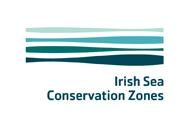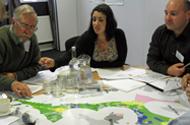Glossary
Biodiversity: The variety of life forms, including plants, animals and microorganisms, the genes that they contain, and the biotopes and ecosystems that they form (Finding Sanctuary 2009).
Biodiversity hotspots:Areas of high species and habitat richness (Jackson, et al. 2009).
Buffer zone: A transition zone around a protected (or closed) areain which some activities may be restricted to enhance the benefits to be gained from the protected area.
Deep-sea: The seabed generally beyond 200 m depth.
Defra: The UK government department responsible for the environment, for food and farming, and for rural affairs.
EC Habitats Directive: EC Directive that aims to promote the maintenance of biodiversity. It requires Member States to maintain or restore natural habitats and wild species, and introduce robust protection habitats and species of European importance.
EC Birds Directive: EC Directive on the conservation of wild birds. It provides a framework for the conservation and management of wild birds in Europe, and human interactions with them.
(Areas of) Ecological importance: Areas of the sea important for particular life stages or behaviours of species, areas of high productivity and areas of high biodiversity can be considered to be particularly ecologically significant.
Ecology: The study of the interrelationships between animals, plants and the non-living components of theirenvironment, in their natural surroundings.
Ecosystem: A set of plants and animals inhabiting a given space, the interactions between the different species, and the interactions between the species and their physical environment.
Environment: The physical surroundings and climatic conditions that influence the behaviour, growth, abundance and overall performance of a population or species (Anon 2001).
GIS (Geographic Information System): A system of hardware, software, and procedures designed to support the capture, management, manipulation, analysis, modelling, and display of spatially referenced data for solving complex planning and management problems. (NOAA 2009)
Habitat – the place where an organism lives, as characterised by the physical features. For example, rocky reefs, sandbanks and mud holes all provide particular habitats that are occupied by animals adapted to live in or on one of them but probably cannot thrive, or even survive in the others.
Intertidal: The foreshore or area of seabed between high water mark and low water mark which is exposed each day as the tide rises and falls. Also called the littoral zone (Anon 2001).
Invasive species: Plants and animals that are introduced to a new area and outcompete native species. Invasive species can reduce biodiversity and negatively affect marine ecosystems.
Joint Nature Conservation Committee (JNCC): The statutory adviser to government on UK and international nature conservation.
Marine Conservation Zone (MCZ): a new type of Marine Protected Area (see MPA) to be designated under the Marine and Coastal Access Act. MCZs will protect nationally important marine wildlife, habitats, geology and geomorphology, and can be designated anywhere in English and Welsh inshore and UK offshore waters.
Marine Conservation Zone Project: A project established by Defra, Natural England and the Joint Nature Conservation Committee to identify and recommend Marine Conservation Zones to the government. The Marine Conservation Zone Project will work with sea users and interest groups to identify Marine Conservation Zones, and will be delivered through four regional projects covering the south-west, Irish Sea, North Sea and Eastern Channel.
Marine Protected Area (MPA): A generic term to cover all marine areas that are ‘A clearly defined geographical space, recognised, dedicated and managed, through legal or other effective means, to achieve the long-term conservation of nature with associated ecosystem services and cultural values’ (Dudley 2008).
Natura 2000: The EU network of nature protection areas (classified as SPAs and SACs) established under the 1992 Habitats Directive.
Natural England: The statutory advisor to the government established to conserve and enhance the natural environment, for its intrinsic value, the wellbeing and enjoyment of people and the economic prosperity that it brings. Natural England has a statutory remit for England out to 12 nautical miles offshore.
No-take zones: Areas from which the removal of any resources, living or dead (e.g. marine aggregate) is prohibited
Protected Area: A clearly defined geographical space, recognised, dedicated and managed, through legal or other effective means, to achieve the long-term conservation of nature with associated ecosystem services and cultural values (Dudley 2008)
Ramsar: Sites designated under the Convention for Wetlands of International Importance, signed in Ramsar, Iran in 1971. http://www.ramsar.org/
Relevant authority: Any public body that has a function or duty in relation to a marine area but particularly sites designated under conservation regulations.
SAC (Special Areas of Conservation): Protected sites designated under the European Habitats Directive for species and habitats of European importance.
SAP (Science Advisory Panel): The SAP provides the scientific knowledge, advice and judgement necessary to assist the regional MCZ projects in identifying MCZs. The panel also provides the necessary scientific knowledge, advice and judgement for the Secretary of State in designating these sites. Members and chair of the SAP will be appointed by Defra.
SPA (Special Protection Areas): Protected sites designated under the EC Birds Directive, for rare and vulnerable birds and for regularly occurring migratory species.
SSSI (Site of Special Scientific Interest): A conservation designation denoting a protected area in the United Kingdom. SSSIs are the basic 'building block' of nature conservation legislation and most other legal nature/geological conservation designations are based upon them, including National Nature Reserves, Ramsar Sites, Special Protection Areas, and Special Areas of Conservation.
Stakeholder: a person, group or organisation that affects or can be affected by the actions of an organisation or project. Stakeholders can also be people with an interest in a project or organisation, including members of the public.
UK offshore marine area: This includes waters beyond 12 nautical miles, within British Fishery Limits and the seabed within the UK Continental Shelf Designated Area.

 Get Involved
Get Involved









